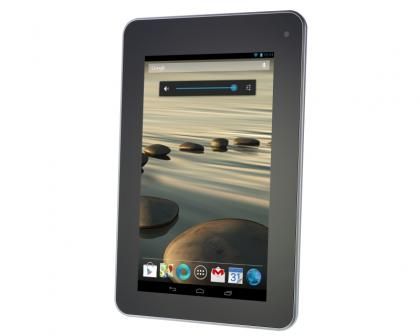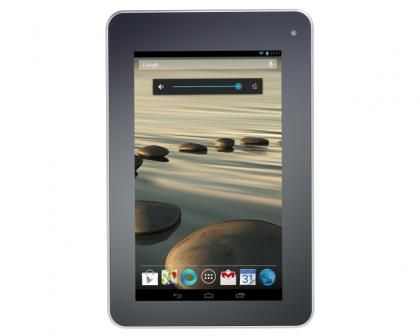Any budget 7in tablet is still invariably going to be compared to the outgoing Google Nexus 7 (2012 edition). Google's tablet may well be over a year old now, but it still remains one of the undisputed kings of the 7in arena - and at £159 its a chunk cheaper than its £199 replacement, the new Nexus 7 .
Rivals need to do something special to make them stand out therefore, but whereas the Acer Iconia A1 with its 4:3 screen had a niche to fill as a kind of Android-powered alternative to the iPad Mini, the Iconia B1 is very much second-string on all fronts.

The B1's bulky plastic chassis won't be to everyone's taste, but its rounded edges and slimline 340g weight make it very comfortable to hold. It never feels like a dead weight in your hands, but we had some concerns over its build quality. Its silver edges were very firm, but there was a considerable amount of flex on both the rear and front panels that made it feel a little cheap and tacky.
The B1 has a good set of ports for a budget tablet, though, even if it's not quite as well-equipped as the Iconia A1. A 3.5mm headphone jack sits on top of the tablet and underneath you'll find a MicroUSB port for charging the device. There's also a small plastic flap concealing a microSD card slot for adding another 32GB of storage to its 16GB of internal memory. The flap itself is quite flimsy, but we were pleased to have the option of expanding the B1's storage, as this is quite unusual on a budget tablet. There's no main camera, sadly, but a tiny camera sits in the top-right corner for video chat or blurry self-portraits.

The tablet's 7in screen was less impressive. It uses a standard LCD panel and has a 1,024x600 resolution, giving it a lower pixels-per-inch rating than both the Nexus 7 and the Iconia A1. The screen looked reasonably sharp, but its narrow viewing angles affect image quality unless you look at the tablet straight on. Its grainy coating doesn't help either, as this had a tendency to distort colours slightly, particularly when the screen had picked up a few fingerprints.

The screen could be better, but the Iconia B1 is no slouch when it comes to processing power. It has a dual-core processor running at 1.2GHz and 1GB of RAM, which proves enough to run Android smoothly, and it completed our SunSpider JavaScript benchmark in a surprisingly quick 1,605ms when we used the Chrome browser. This puts it on par with the Nexus 7 and is only 100ms slower than the quad-core-based Iconia A1. The tablet is unlikely to be able to run any demanding 3D games, though, as it wasn't able to run our 3DMark Ice Storm graphics test.
The Nexus 7 pulls ahead again when it comes to battery life, though, as the B1's 2,640mAh battery only lasted six hours in our continuous video playback test with the screen set to half brightness. This isn't bad for a budget tablet, but it pales in comparison to the ten hours we saw from the Nexus 7.

The rest of the Iconia B1 is fairly unremarkable. Unlike its big brother, the B1 uses a standard version of Android's Jelly Bean 4.1.2, not the latest 4.2.2. This leaves the B1 feeling a little dated by comparison, and we missed features such as multiple user accounts, but it's still fine for single users. We were able to jump straight into Google Search or use the webcam from the standby screen and sync various email accounts to the device. There's also a customisable app bar above the onscreen menu buttons that lets you access your favourite apps from any of the five home screens.

